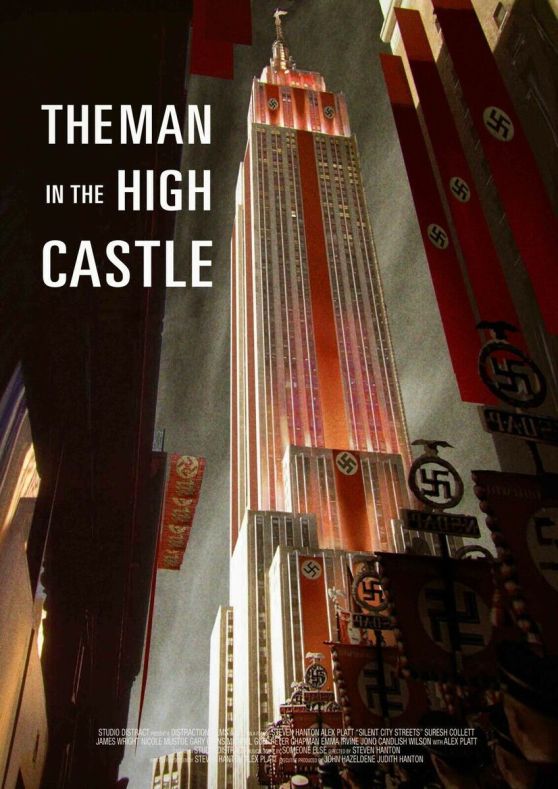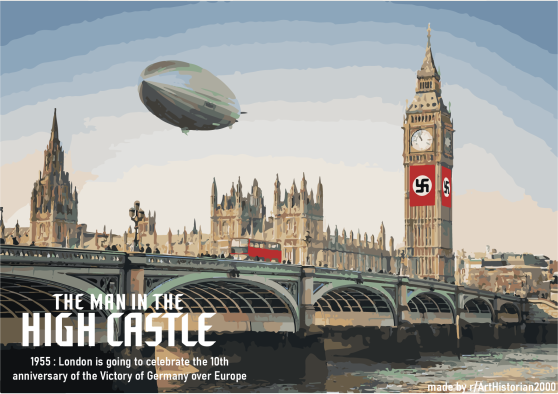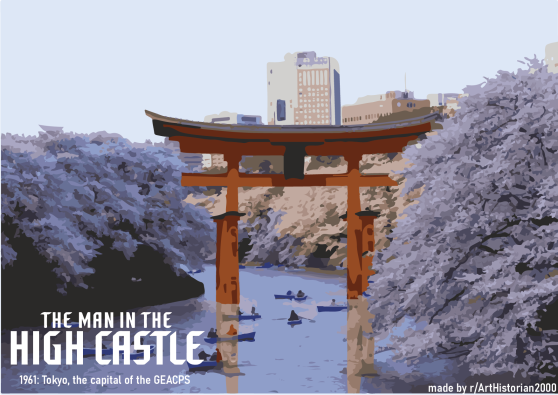
timespace coordinates: Set in 1962, the series’ main setting is a parallel universe where the Axis powers of Nazi Germany and the Empire of Japan have won World War II in 1946 after Giuseppe Zangara successfully assassinates United States President-elect Franklin D. Roosevelt in 1933, creating a series of developments that include the Germans dropping an atomic bomb on Washington, D.C. (now renamed “District of Contamination”). The German Reich extends to Europe and Africa and the Empire of Japan comprises Asia, but most of the series is set in the former US and in Germany proper.

Western North America, now part of the “Japanese Pacific States”, is occupied by the technologically less-advanced Shōwa-period Empire of Japan, which has assimilated its formerly American citizens into Japanese culture, although high-class ethnic Japanese are extremely fascinated by pre-War American culture. Japan’s Trade and Science ministers work in the Pacific States’ capital, San Francisco. The Japanese rulers subject non-Japanese people to racial discrimination and grant them fewer rights.

Eastern and Midwestern North America is a colony controlled by the Greater Nazi Reich (GNR) under an aging Führer Adolf Hitler. The colony, headed by a “Reichsmarschall of North America”, is commonly referred to as “Nazi America” or “the American Reich” and its capital is New York City. The Nazis continue to hunt minorities and euthanize the physically and mentally sick. The superior technology of the Germans is highlighted by the use of video phones and Concorde-like “rockets” for intercontinental travel.
A Neutral Zone, which encompasses the Rocky Mountains, serves as a buffer zone between the Japanese Pacific States and Nazi America due to Cold War–like tensions between the German and Japanese blocs. Another buffer zone is present in the Urals.
Films collected by the eponymous “Man in the High Castle” show views of numerous other Earths, including some where the Allies were victorious, some featuring executed Allied leaders (such as Winston Churchill and Joseph Stalin), and some where an American resistance is doing well.
The Man in the High Castle is an American dystopian alternate history television series created for streaming service Amazon Prime Video. It was created by Frank Spotnitz and produced by Amazon Studios, Ridley Scott‘s Scott Free Productions (with Scott serving as executive producer), Headline Pictures, Electric Shepherd Productions, and Big Light Productions. The series is based on Philip K. Dick‘s 1962 novel of the same name. (wiki)













